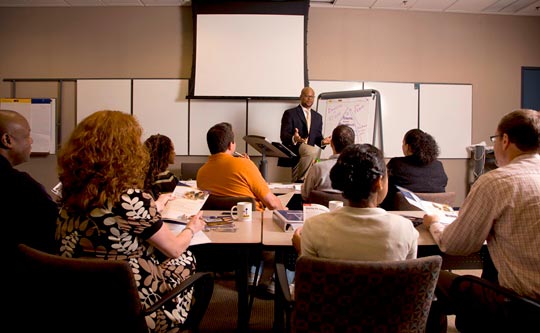
How do you define success in your security program? Maybe your metrics include meeting specific goals or use benchmarks from employee surveys and incident reports. Whatever the measure, you will need to determine the right processes, people and technology to ensure that success is attainable. For security services providers, one measure of success is training’s implementation, participation and effectiveness.
Is your training a catalyst for success? Training that speeds change and action always includes:
-
Core – Great training programs establish a clear overview of the expectations and standards for a position. In this stage, knowledge is provided and tested. Core training lays the foundation for future development.
-
Site-Specific – With a solid foundation, security professionals can apply their knowledge in practical ways. Site-specific training includes industry-specific development. During this phase security professionals begin to move from generalist to specialist, enhancing productivity and responsiveness.
-
Ongoing – As environments and regulations evolve, so must knowledge. Training has equal purpose at every step in a career. To remain responsive and vigilant, security officers must experience continuous learning, and management support ensures what’s learned is applied.
-
Reinforcement – Training will never be a catalyst for success if it is always an event. The ‘one and done’ philosophy will fall flat when tested in an emergency. Training reinforcement can be a performance measure. Reinforcement, more than any other aspect of training, will build a learning culture that speeds significant change and action.
-
Accessible and Engaging Content – The best time for learning is when the student is available. A mix of classroom and online training ensures that information is accessible. Retention improves with content and delivery that are engaging, creative and multi-faceted, yet maintains the integrity of the subject.
The most effective learning and development culture is one where the students seek out learning opportunities and supervisors support this learning, and make sure they are growing in their leadership roles. Whether the courses voluntary or required, the end result is the same – more knowledgeable and better prepared security professionals poised to create and maintain safe and secure environments.
Make your training a true catalyst for the success of your security program. Learn more in our article, Training to Meet Guidelines vs. Training to Exceed Expectations.
About the Author
Brent O’Bryan is the Vice President of Training and Development for Allied Universal. He has been a certified Senior Professional in Human Resources, SPHR, since 2003.









